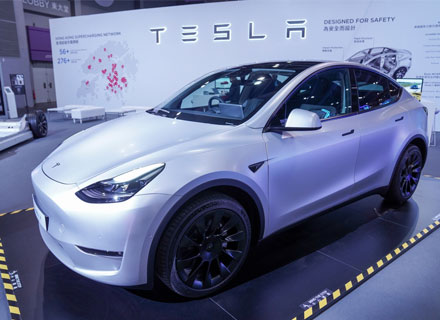The global passenger electric vehicle (EV) sales went up on a 53% year-on-year basis in the fourth quarter of 2022 to bring the year’s total to over 10.2 million units, as per a report from Counterpoint Research.
Tesla’s Model Y remained the best-selling model globally followed by China-based BYD’s Song model. Tesla has been on a price revision spree, as many as five times since October 2022. It implemented price cuts in China of up to 9% on the Model 3 and Model Y. In January 2023 again, the automaker reduced prices for Chinese buyers by nearly 14%.
The company in December 2022 offered US buyers a USD 3,750 credit toward a Model Y or Model 3 if they had their vehicle delivered in the same month. In the last week of 2022, Tesla upped that discount to USD 7,500. In January 2023, Tesla updated its website with new prices for its US buyers. The long-range Model Y crossover’s price tag got revised to USD 52,990, a nearly 20% drop in price.
In March 2023, Tesla again cut the prices of its Model S sedan and Model X SUV in the United States. The Model S all-wheel drive is now available for USD 89,990, which is down 5.2% or about USD 5,000 from USD 94,990. The Model S Plaid’s starting price range is now at USD 109,990, down 4.3% from USD 114,990.
The Model X all-wheel drive’s price tag is currently standing at USD 99,990, down 9.1% or USD 10,000 from USD 109,990. The Plaid is now USD 109,990, down 8.3% from USD 119,990.
During Q4 2022, battery electric vehicles (BEV) accounted for almost 72% of all EV sales, while plug-in hybrid electric vehicles (PHEVs) accounted for the rest, stated the Counterpoint Research report.
In 2022, the top three electric vehicle markets were China, Germany, and the US. The top 10 EV automotive groups, which hold more than 39 passenger car brands, contributed to almost 72% of all EV sales in the 2022 fourth quarter, stated the study.
“The annual total for 2022 would have reached close to 11 million units had fresh COVID-19 infections not surfaced in China. The infections in China during November and December affected automotive production and sales and disrupted the component supply chain,” remarked research analyst Abhik Mukherjee, while interacting with IANS
Despite economic headwinds, Chinese brands have not only managed to record strong growth, but these companies have also even started to expand in markets like Europe, Southeast Asia and Latin America.
“Chinese brands are likely to dominate in Southeast Asia and Latin America as there are very few brands operating in these regions. But a fight for market presence is expected in Europe,” Abhik Mukherjee added.
As per a report from Quartz, global EV sales have increased by around 60% in 2022, surpassing 10 million for the first time.
As per the recent assessment from the International Energy Agency (IEA), one in every seven passenger cars bought globally in 2022 was an electric vehicle, as against the 2017 stats of just one in every 70 sold cars.
The sales of conventional cars have gone down by a quarter in the last five years. EV sales are increasing due to factors like improved production rates, skyrocketing fuel costs and targeted government policies aimed to support the electric car-making ecosystem.
Stand-out markets for EVs are China, the European Union and the United States.


